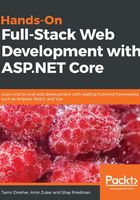
CSS
CSS is a style sheet language that is used to describe how HTML elements look. It is one of the pillars of web development, and provides many features for web developers that enable the creation of web applications that look great and adapt themselves to both mobile and desktop use.
CSS is a markup language and, like HTML, it does not support dynamic features such as variables and loops. Having said that, CSS does have some capabilities that enable it to change the look of an element based on its state, such as when a mouse is hovering over it, or based on an environment detail such as screen width.
In recent years, there has been interesting progress in the world of CSS. Since CSS is used in every single web application today, developers required more advanced capabilities for development — features such as variables, hierarchy, mixins (grouping CSS declarations for better reusability), and others — that were absent from CSS. As a result, new languages have been created, such as SCSS and LESS. These languages are supersets of CSS—they add much-needed features to the CSS development process and compile to CSS to be interpreted by browsers.
The last version of CSS, CSS3, added features such as web fonts, animations, transformations, and transitions that made the web application experience much smoother and more user-friendly.